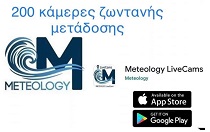Humidity
Humidity is a measurement of the amount of water vapour in the air. Find out more about the different types of humidity. Atmospheric humidity is a measure of water held in the air as a gas. Water can be solid (ice), liquid (water) or a gas (vapour).

Types of humidity
The amount of water vapour in the air can be quantified in three different ways:
Relative humidity
Relative Humidity (RH) is the most common measure of humidity. It measures how close the air is to being saturated – that is how much water vapour there is in the air compared to how much there could be at that temperature. Warmer air can hold more water vapour because there is more energy available. If the RH of the air is 100% then it is fully saturated.
Specific humidity
Specific humidity and the mixing ratio measure the actual amount of water vapour in the air as a weight in grams. They are very similar but the specific humidity is the weight of water vapour for every kilogram of air (including water vapour) whereas the mixing ratio is the weight of water vapour for every kilogram of dry air (not including water vapour).
Thermal humidity
‘Dew point temperature’ and ‘wet bulb temperature’ are also measures of humidity. These are both measures of how close the air is to being saturated. If they are equal to the actual air temperature then the air is saturated and RH is 100 %.
Humidity is the amount of water vapor present in the air. Water vapor is the gaseous state of water and is invisible. Humidity indicates the likelihood of precipitation, dew, orfog.
Higher humidity reduces the effectiveness of sweating in cooling the body by reducing the rate of evaporation of moisture from the skin. This effect is calculated in a heat index table or humidex.
The amount of water vapor that is needed to achieve saturation increases as the temperature increases. As the temperature of a parcel of water becomes lower it will eventually not reach the point of saturation without adding or losing water mass.
The differences in the amount of water vapor in a parcel of air can be quite large. For example, a parcel of air that is near saturation may contain 28 grams of water per cubic meter of air at 30 °C, but only 8 grams of water per cubic meter of air at 8 °C.
There are three main measurements of humidity: absolute, relative and specific. Absolute humidity is the water content of air expressed in gram per cubic meter.
Relative humidity, expressed as a percent, measures the current absolute humidity relative to the maximum (highest point) for that temperature. Specific humidity is the ratio of the mass of water vapor to the total mass of the moist air parcel.

Δημοφιλή Άρθρα
- Αυτά είναι τα 5 ενεργά ηφαίστεια της Ελλάδας (140318)
- Ιστορικό κύμα ψύχους στην Ευρώπη- τι αναμένεται στην χώρα μας (101055)
- ΕΜΦΑΝΙΣΤΗΚΕ ΦΥΣΗΤΗΡΑΣ ΣΤΗ ΧΑΛΚΙΔΙΚΗ-ΒΙΝΤΕΟ (55758)
- Λευκά Χριστούγεννα? Ποιες περιοχές θα δούνε χιόνια (41160)
- Τα παράξενα του 2021 συνεχίζονται: Λίμνη εμφανίζεται σε ένα… βράδυ σε χωράφι (32796)
Αναζήτηση
Πρόσφατα Άρθρα
Κατηγορίες
Ετικέτες
To find out more, including how to control cookies, see here: Cookie Policy


